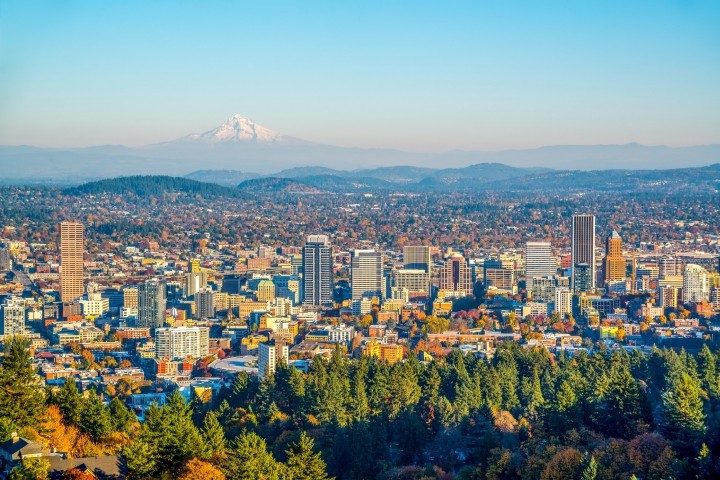
Democrats claim must address “root causes” of problems in order to solve them. This approach is reasonable and may bear fruit, but only if the “root causes” are correctly identified. And that is where leftists usually fail and make things worse. As yet another illustration of that, Portland, Oregon, plans to address a growing crisis of homelessness by encouraging it instead of eliminating the true root causes of the problem, namely, poverty, lack of employment opportunities, mental-health issues, and substance abuse.
On Thursday, Portland City Commissioner Dan Ryan announced the first three out of six government-sanctioned homeless camps, which have been dubbed “Safe Rest Village” sites, will be up and running by the end of this year.
According to The Oregonian, Ryan argued the camps will ease “a humanitarian crisis on our streets” until affordable housing becomes available for a larger portion of Portlanders. Which, the city believes, will take some three more years, and this is how long the “villages” are plan to be operating for.
In the meantime, the city plans make sure “these sites were spread throughout the city and in areas where neighbors are experiencing a high degree of unsanctioned camping.”
The outlet specifies that each of the three sites will have individual “sleeping pods” — akin to tiny houses — outfitted with electricity, windows, locking doors, and heating. The residents will be provided with shared hygiene services such as bathrooms and showers. There will also be kitchenettes with refrigerators and microwave ovens, and laundry services. Though the capacity of the sites will vary, Ryan noted, the average capacity will be around 60 occupants per site. To keep the “villagers” safe, a 24/7 oversight over the premises will be provided.
Ryan further explained that homeless individuals will access the “villages” based on a referral system. Referrals will be typically issued by first responders, social workers, park rangers, and other city workers who regularly interact with individuals living in unsanctioned encampments throughout the City of Roses.
The city officials also underlined that the villages would focus on providing support to individuals with behavioral health issues and who “often fall through the cracks of social services.” Why and how it happened in such an ultra-liberal city was not mentioned.
The project was made possible thanks to the American taxpayers. It will receive $16 million in federal American Rescue Plan funds that must be appropriated by the end of the year. The funds “will be well spent building safe, sustainable, managed villages that will meet our houseless neighbors where they are and build resiliency for our entire city” Ryan claimed, as he added that he “can’t wait to share more progress as we move forward on this vital work.”
The commissioner also expressed his belief “that Portlanders will welcome these villagers in their neighborhoods as we work to support unhoused residents as a community.”
While some of the locals stated they are all for helping homeless people by setting whole residential areas for them, many expressed their concerns. Most vocal critics of the policy are parents who worry about their children’s safety, since one of the sites will be neighboring The International School of Portland.
Per a local media report, one of the mothers whose child attends the school called the announcement “disconcerting,” while another said she was gravely concerned about people walking through school grounds from the camp. Other parents indicated their “mixed feelings” about the situation. On one hand, it is “humane” to provide shelter to those in need. On the other hand, these people may pose a threat to others, given the site will primarily be housing people suffering from mental illnesses.
“If there is somebody that is having an episode, whether mentally or is on some sort of substance, and then they kind of start walking or they start to get on the school property,” one of the moms said, “But I just have to trust that the school is going to handle it in the best way that is going to be most safe for the students.”
Oregon Public Broadcasting provides that “while there has not been an official count of Portland’s homeless population since 2019, encampments appear to have proliferated during the pandemic.” The local residents reported more than 60,000 camp sites during the last fiscal year.
The details about each of the “Safe Rest Village” sites can be found on the official website of the City of Portland. Among other things, the site mentions that special care will be given to “Black, Indigenous, and People of Color (BIPOC) villagers,” as well as “other folks on the LGBTQIA+ spectrum.” The downtown site will house an already-existing outdoor shelter called Queer Affinity Village, which the city and county opened for the LGBTQ community during the pandemic.
The land for the construction of the villages was contributed by the city’s Bureau of Environmental Services, the Portland Bureau of Transportation, and TriMet, a public agency that operates mass transit in a region that spans most of the Portland metropolitan area.
Peculiarly enough, the website indicates that the city’s shelter capacity has doubled since 2016 “from 650 beds to nearly 1,400 beds,” meaning the city is failing to solve the issue. It also said that while initially “most services and shelter locations were concentrated downtown,” the city “learned years ago that limiting shelters to one part of the city was a barrier that prevented Portlanders from accessing shelter.”
What Portland evidently did not learn is that people who are fully provided for are seldom incentivized to become a productive members of society. Given the numerous other social and economic issues that are turning Portland into a failed city, many more “homeless villages” will likely need to be set up for those who could only rely on the government to cover their basic needs.




